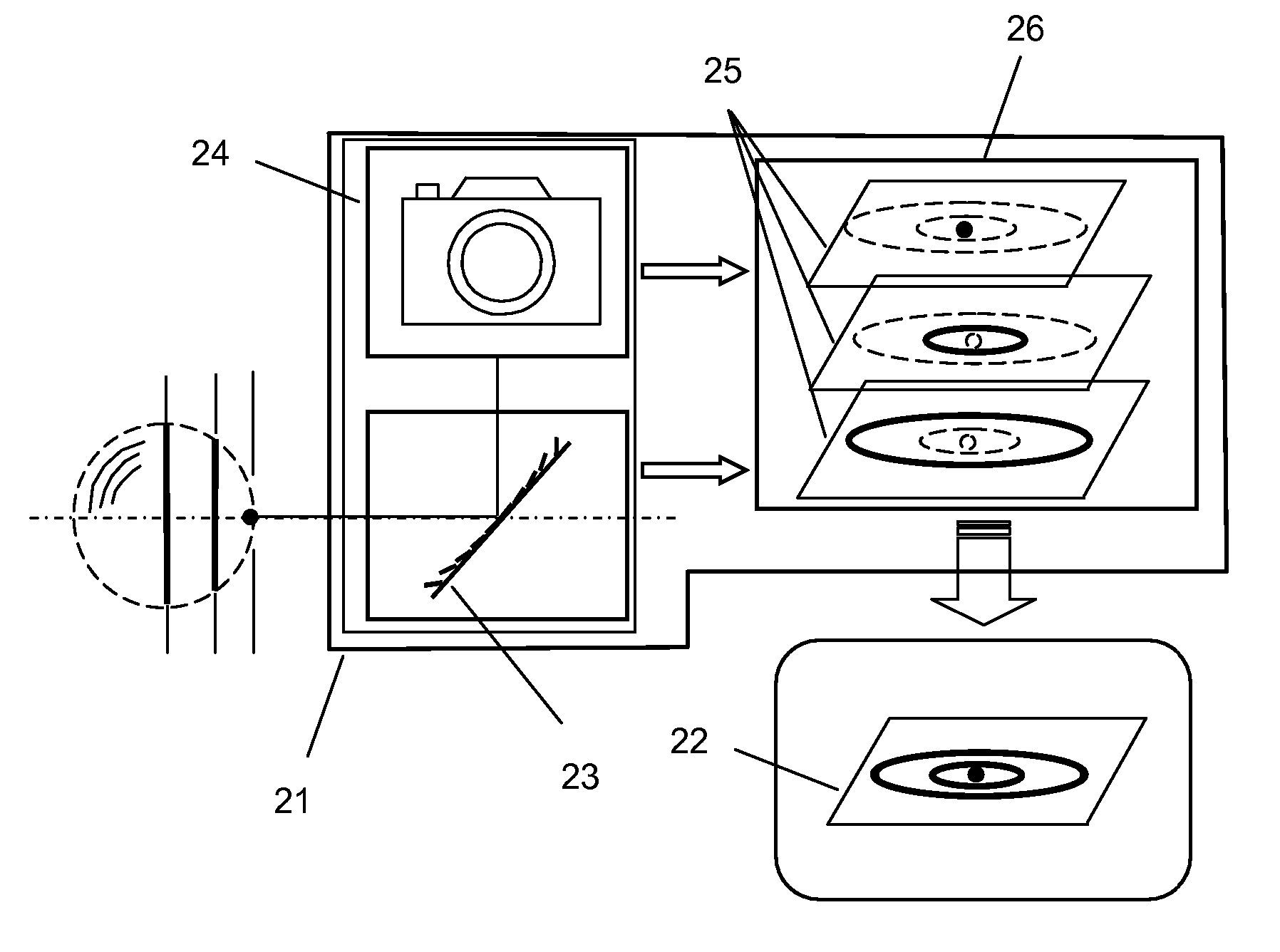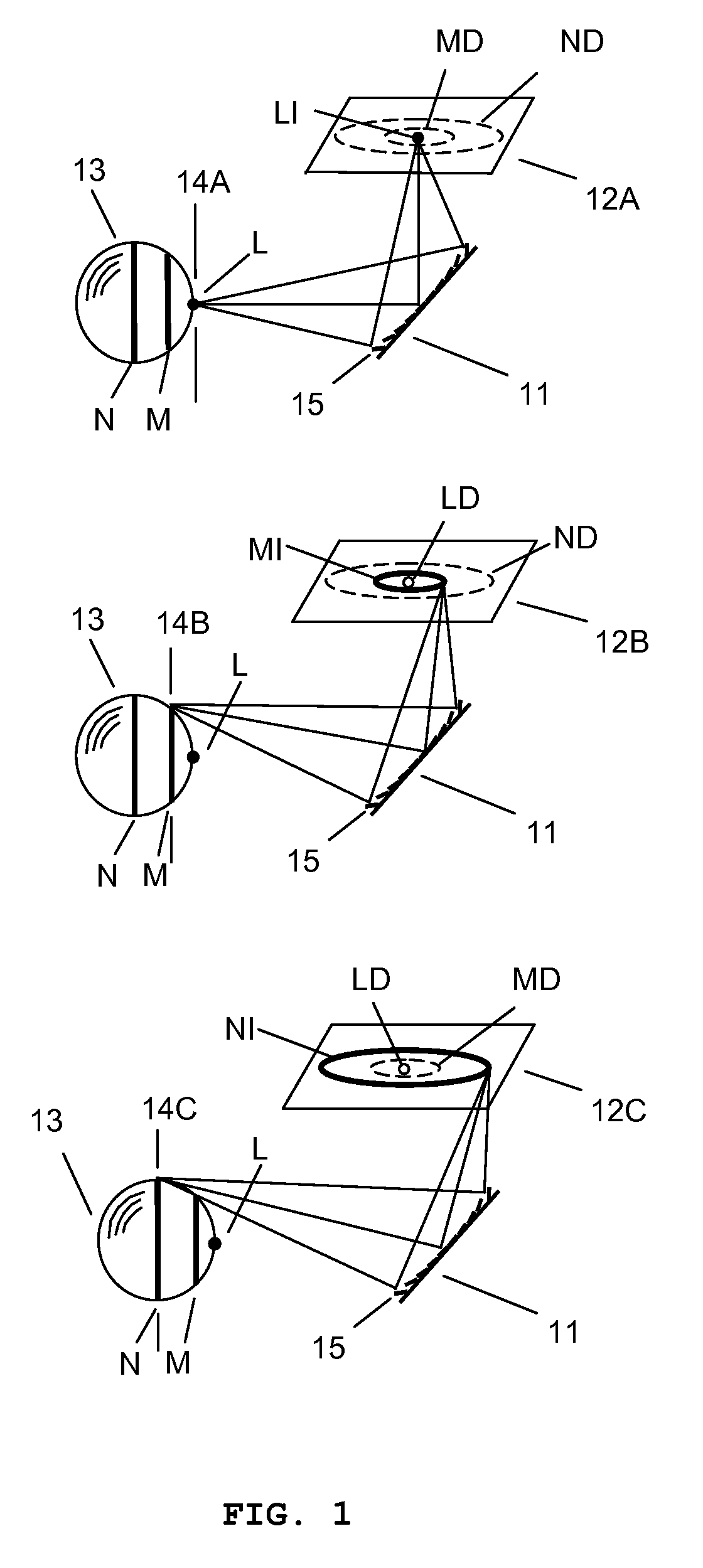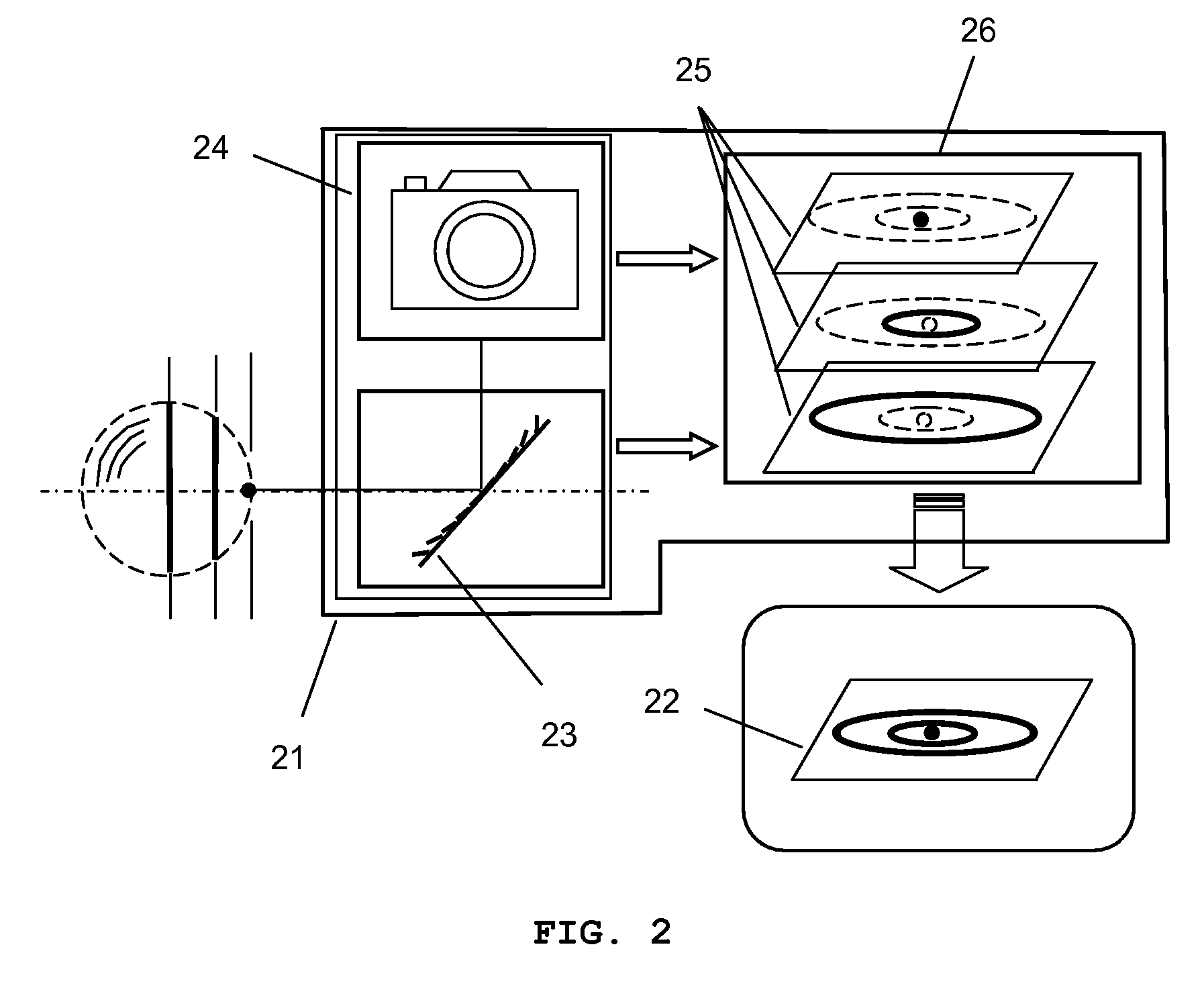Three-dimensional imaging system
a three-dimensional imaging and imaging system technology, applied in the field of three-dimensional imaging systems, can solve the problems of high cost, large and heavy devices, and many technical problems involved, and achieve the effect of reducing the risk of accidents, and reducing the cost of equipmen
- Summary
- Abstract
- Description
- Claims
- Application Information
AI Technical Summary
Benefits of technology
Problems solved by technology
Method used
Image
Examples
Embodiment Construction
[0043]FIG. 1 shows how a three-dimensional image is obtained from two-dimensional images captured by a variable focal length MMAL 11. Two-dimensional images 12A, 12B, and 12C are captured by changing the focal length of the MMAL 11. Captured two-dimensional images 12A, 12B, and 12C have different in-focus pixels because the in-focus plane in an object 13 is varied as the focal length of the MMAL 11 is varied. The captured two-dimensional image 12A with the first focal length has an in-focus image LI which is the image of the portion L of the object 13. The portion L of the object 13 lies on the in-focus plane 14A while images MD, ND of portion M, N of the object 13 are defocused. Therefore, the image processing unit can extract the in-focus pixels LI from the captured two-dimensional images 12A and generate a depthwise image, which contains only in-focus pixels. The distance between the in-focus plane 14A in the object and the imaging system can be estimated by using known imaging s...
PUM
 Login to View More
Login to View More Abstract
Description
Claims
Application Information
 Login to View More
Login to View More - R&D
- Intellectual Property
- Life Sciences
- Materials
- Tech Scout
- Unparalleled Data Quality
- Higher Quality Content
- 60% Fewer Hallucinations
Browse by: Latest US Patents, China's latest patents, Technical Efficacy Thesaurus, Application Domain, Technology Topic, Popular Technical Reports.
© 2025 PatSnap. All rights reserved.Legal|Privacy policy|Modern Slavery Act Transparency Statement|Sitemap|About US| Contact US: help@patsnap.com



